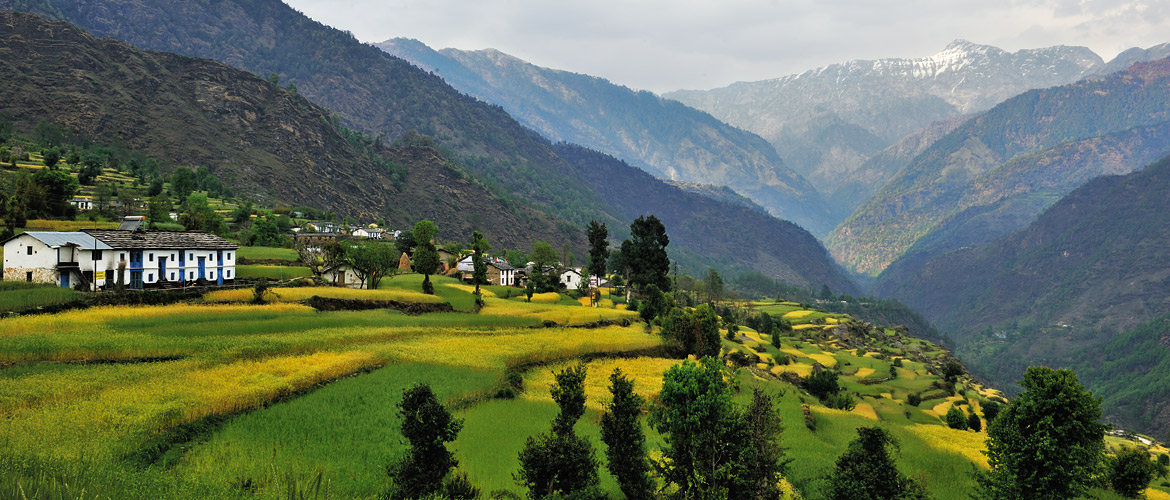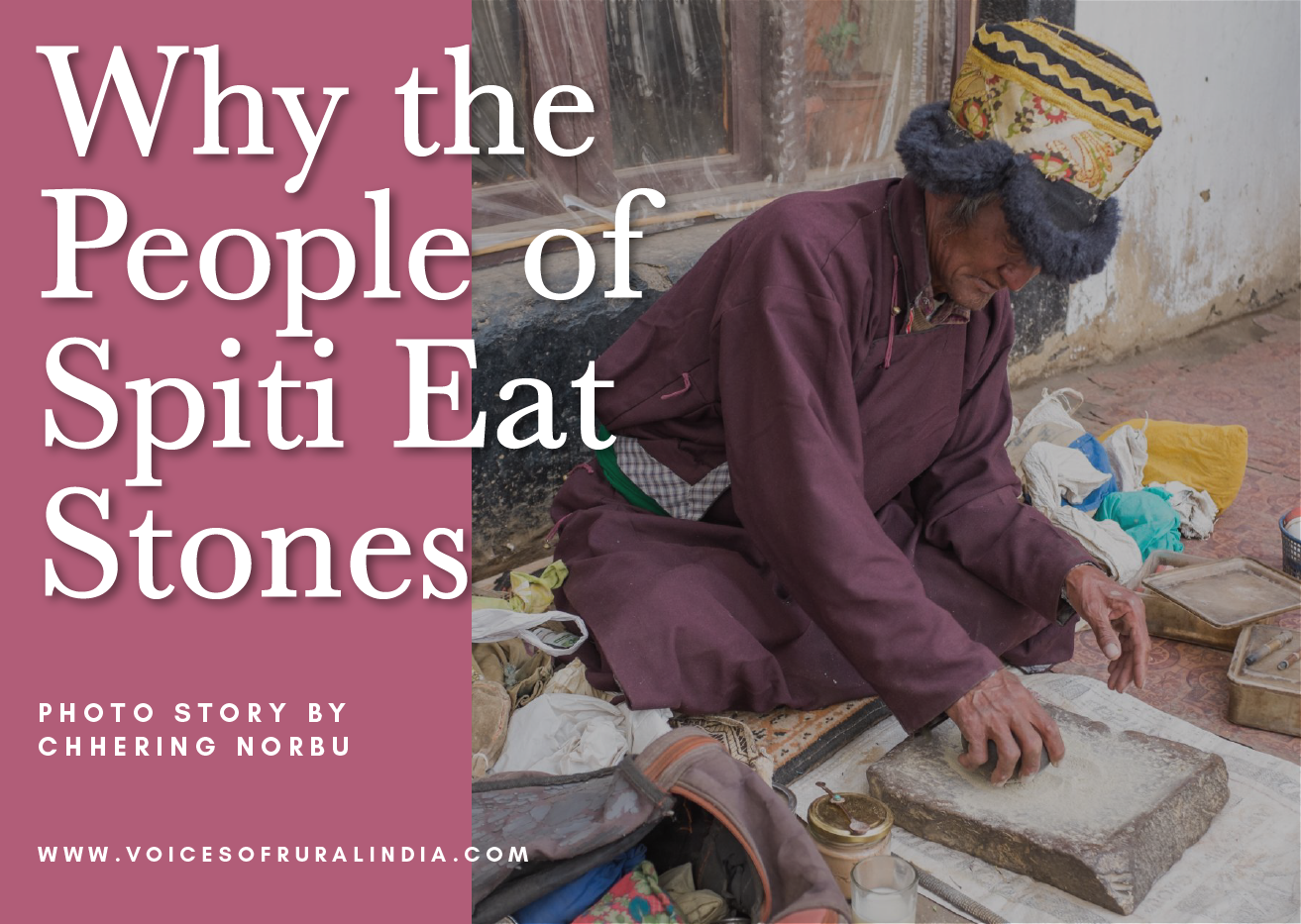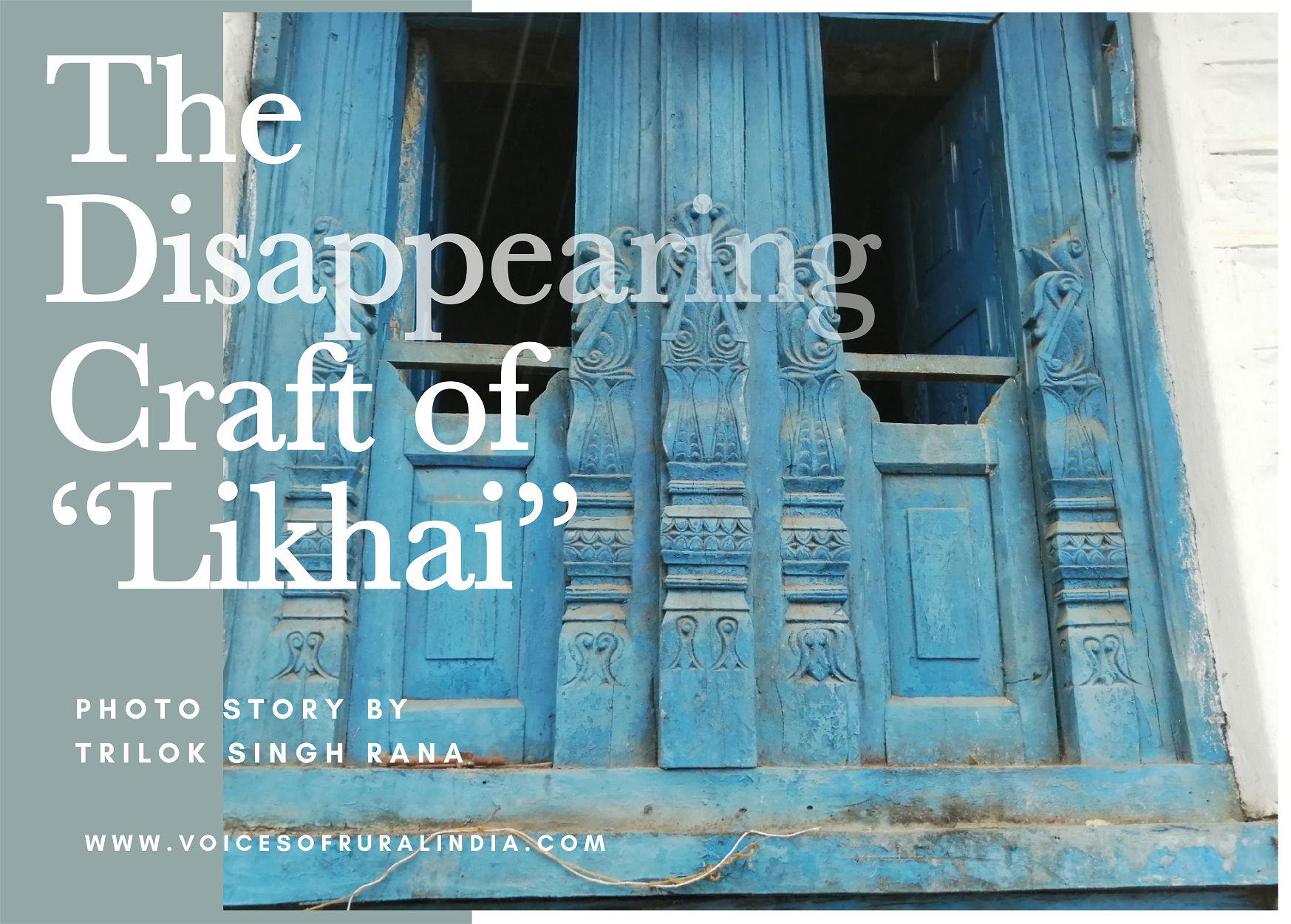
Get an exquisite taste of mountain communities in Kumaon's Saryu Valley
By Bibek Bhattacharya
"Look there,” Khim Singh grabs at my arm urgently, “a pine marten!” Frantically looking in the direction he’s pointing, I see it, actually a yellow-throated marten, staring at me with a seemingly startled expression on its face. In a flash, it’s gone, but it had lingered long enough for me to get a long, good look at it. To come face to face with a wild creature is to know that you’re in the wilderness. I won’t forget the marten’s eyes in a hurry, coal-black and huge, eyes from a different world.
We’re at the bottom of a gorge formed by the Saryu, a major Himalayan river in the upper reaches of Kumaon in Uttarakhand. Surrounded by subtropical forests of chestnut and alders, these are the no man’s land between the commons of the villages of the Saryu valley and local forests that fall under the purview of the forest department. Lines between the civilised and the wild are fluid here. I’m an urban tourist with only a partial grasp on the realities of a high Himalayan valley, and it’s fair to say that I’m under the spell of the Saryu valley.
This is exactly the kind of tourist experience that Village Ways, a responsible tourism company based in the Kumaon hills, has pioneered and perfected. Founded in 2005, Village Ways is basically a social enterprise that aims to provide an additional source of livelihood to rural communities through responsibly managed tourism. The company began its work in six villages in and around the Binsar Wildlife Sanctuary near Almora, before branching out to the Saryu and Pindar river valleys. Today, it has ventured further afield by taking its idea of responsible tourism to villages in Rajasthan, Kerala and Karnataka, as well as in western Nepal and Ethiopia. Ten years into its ambitious project, Kumaon remains the beating heart of Village Ways.
While exploring the Saryu valley, Puneet and I are accompanied by Khim Singh Danu, a professional guide from Jhuni village and Tara Singh Takuli, a Village Ways coordinator from Supi village. “Jhuni is the last village in the valley,” Khim Singh tells me when we first meet him at the Supi roadhead, “Beyond Jhuni it’s completely wild.” In a way, each of the three upper Saryu villages where Village Ways has set up guesthouses in partnership with the local communities, are on the edge of the wild. Beyond Jhuni lies a bare, perpendicular rocky ridge rising to over 13,000 feet, and then the snow peaks of Nanda Kot and Changuch. Below Khaljhuni, a predominantly Bhotiya village located between Supi and Jhuni, are the thick forests of the Saryu gorge. Directly above Supi, the largest and most prosperous village of the upper Saryu valley, are dense rhododendron and oak forests, which give way to rising to emerald green bugiyals on the narrow watershed ridge between the Saryu and Pindar valleys.

We begin our visit at the Supi guesthouse, a traditional longhouse called a berklay that used to house three families once upon a time. It’s quite an ancient building, and you can see the wood-carved doors and windows that were once the hallmark of mountain architecture in the region. Previously, the livestock and kitchen would be on the ground floor of the building, while the residential rooms would be above it. Today, the ground floor houses a roomy kitchen, a sitting-cum-dining room and the guides’ and coordinators’ quarters. The large double rooms on the first floor are for guests, and can comfortably house up to six people.

I meet Pooja Mansour, the coordinator in charge of all the Kumaon properties, in Binsar later in the trip. “At Village Ways, we made a conscious decision to limit the number of guests in a group to six,” she says. “Beyond this number, it would be too many people for us and our partner communities to host.” Spacious and very comfortable to begin with, the rooms have been re-furbished to provide all mod cons, including hot running water, heated by the solar panels on top of the building. Although villages like Supi get electricity from the mains, more remote villages like Khaljhuni, where we stay one night before heading up to the ridge, and Jhuni get their electricity from a community-operated small hydel-power plant down by the river. Says Tara Singh, “I remember, in the 80’s, when this was inaugurated by the then Governor of Uttar Pradesh, who flew down to the valley in a helicopter. I’ve never seen as many people together in one place like that.”
But the valley is certainly changing. Where the roadhead used to be much further down the valley a few years ago, these days, an unsurfaced road reaches the village of Tarsal, just below Supi. Khim Singh hopes that one day it will reach Jhuni as well, though he isn’t entirely sure if that is a good idea. Climbing up the steep 1,000 feet from the river bed to Jhuni village, I can see why villagers would think that a road would help, but I doubt if the forest would ever recover. However, that’s a worry for another day. We have a more interesting task at hand.
The Saryu is quite unique among major Himalayan rivers in that it doesn’t begin from a glacier. Unlike the Pindar system next door, the Saryu arises instead from a number of springs in the thickly-forested northern reaches of the valley. Although the main spring is called Sarmul (literally, the ‘mul’ or root of the Saryu), it gets a major early boost from the Sahastradhara (or Saudhara) Falls, a beautiful waterfall that descends from a high spring to the young river in multiple braids, literally a thousand falls. We were trekking to this fall, deep in the heart of the Saryu gorge.

After crossing and re-crossing the stream on makeshift bridges made of flat, round rocks lashed to yew tree branches, Khim Singh brings us to a threshing mill that’s churned by the river. I love old rural technology like this, human ingenuity at its least invasive. Khim Singh suddenly turns and declares that we can’t follow the river to the falls, as the forest ahead is too tangled and there are no tracks. So we take a detour, and climb about a thousand feet out of the river to Jhuni village, and traverse the mountainside before descending to the gorge again. That’s a cool 4km and 2,000 feet of ascent and descent added to the route. But it’s worth the hike, given the beauty of the place, and how important the mythos of the falls is to the people of the valley. Khim Singh and Tara Singh take turns in telling us the story. The villagers believe that the falls are sacred to the gods, or devtas, of the valley, and that they come here to frolic in the water. No one alive has ever been to the source of the falls, about a thousand or two perpendicular feet above the river. Some who tried were never seen again. We turn a bend on the mountain trail and the falls come into view. It’s pretty dramatic, falling in many braids, its silvery flow lit up by a stray ray of the sun, surrounded by thick forests. At its widest point, a thin yellow rock band extends across the waterfall. Khim Singh points to it, “That’s the golden bridge. On full-moon nights, the gods use it to cross from one side to another, when they come to bathe.”
We get to the descent and literally slide down a steep track through a dense forest to the river. Here, the Saryu is new as the day it first burst forth, gurgling over roots and boulders with reckless abandon. The falls look grander up close, a long white spray disappearing up into the forest above. A small, old shrine, now whitewashed, stands under the falls. We take off our shoes and get to the sacred space. Taking my boots off feels good. I watch while Tara and Khim pay there respects at the shrine. Then they come and sit by me. “Absolutely nobody’s been up there?” I ask Khim. “Well, someone had,” he says. “Many generations ago, there was an ancestor of ours called Byal Barh. He was a special man, he had abilities. He was permitted to go there by the gods, so he climbed up to the source. There he saw a giant black rock with a hundred holes in it, like a sieve. The water fell on the rock and a hundred streams emerged. Byal Barh said it was a beautiful place. All the fruit you ever wanted, orchards of apples, bananas, pears and avocadoes. It’s still there. It’s paradise.” As I look at Khim Singh’s dreamy face, recounting the story, I’m reminded of the description of Eden in Milton’s Paradise Lost; it’s eerily similar.
On my way to the valley, I’d met Dinesh Pande, one of the co-founders of Village Ways, now the Community Relations Director. Something he told me then comes to mind. “Our main model is the formation of village tourism committees,” he said. “That’s what brought us success in Binsar, and that’s what we wanted to replicate in the valley. So we went to Supi, and the guesthouse wasn’t a problem. Then we found this fantastic campsite up on the ridge on Jaikuni bugiyal with a great view of the mountains, and wanted to build a campsite there. The villagers of Supi got scared, saying the bugiyal’s deity will strike dead whoever digs the ground there. So we had to demonstrate that wouldn’t happen,” he said with a chuckle. “We packed some lunch and headed up to the meadow with some spades. Someone joked we should eat all our food as it’s going to be our last meal. I thought we should save some, just in case we lived. So we went, dug, and stayed alive. That persuaded the villagers. Now there’s complete trust. Because we didn’t die!” he ended with another laugh.

We stay at the tented camps at Jaikuni for a couple of nights. Up on top of the ridge, far away from the depth of the gorge, at an altitude of about 10,000 feet, the air is crisp and the sunsets are gorgeous. All around us are oaks and hundreds and hundreds of flowering rhododendrons, in hues ranging from deep red to white and pink and even purple, Puneet alleged. A little shrine was tucked away at one corner at the edge of the forest. Each of the many bugiyals on the ridge has a small, mud-and-thatch shrine, to unnamed gods, defenders of the high places and sheep and shepherds and guardians of the weather. Our god is in a bit of a lousy mood. We don’t get clear views of the fantastic panorama we know is in front of us: the massive southern wall of the Nanda Devi Sanctuary, stretching from Mrigthuni and Maikitoli to Nanda Khat, Nanda Kot and Changuch, even a tip of Nanda Devi. Over the next two days, we walk up and down the ridge, Tara Singh’s “zara sambhalke” ringing in our ears, over giant crags and under massive rock overhangs, over thin ridges dropping off thousands of feet to the two gorges on either side, with rhododendrons and a hundred different birds for company. We hear the rapid pecking of woodpeckers, watch magpies dart and griffons soar in the air below us, monals scatter and barbets cry. Shepherds with huge flocks of sheep complain about the expense of grazing near the Pindari glacier for three months and tell stories about a high-altitude lake behind the high ridge that holds the Saryu valley, where Nanda Devi sometimes comes.

On our last day, we descend some 2,500 feet through dense oak and rhododendron forests past the main shrine of the upper Saryu valley, the Supi Chiltha, to the lovely village of Dhurr in the Pindar valley. The next day, we would leave this magic faraway valley behind, and descend to the heat and dust of civilisation. Eating a fantastic dal and sabzi meal with soft stars outside, I feel thankful that Village Ways exists, and that they’re putting in all this effort to truly enrich the experience of discerning travellers. I raise a toast with Puneet that one day this becomes the new normal of travel.

The Information
Village Ways
Formed in 2005, Village Ways (villageways.com, villagewayspartnership.com) seeks to promote responsible tourism initiatives in India and abroad through community participation and the formation of Village Tourism Enterprises. The company started work with six villages in the Binsar Wildlife Sanctuary, before branching out to the six sites in the Saryu and Pindar valleys in upper Kumaon. Apart from Kumaon, Village Ways also operates in Rajasthan, Kerala and Karnataka as well as in Ethiopia and western Nepal. The aim is to provide supplementary income through tourism to remote villages and help prevent outward migration in search of work. The company also operates a charitable trust that assists the villagers in generating other sources of income, like from traditional handicrafts, and also assist in social projects, including the marketing of products made in the villages. To this end, Village Ways enters into a 33-year lease with the committees and with the landlords of the properties. The company supplies the money to build guesthouses as a loan. 40% of this is waived and the remaining 60% is payable but interest-free. 10% of the guests bills are refunded to the village committees. The company also trains villagers in all aspects of hospitality, including the training of guides.
Saryu & Pindar Valleys
Village Ways and its local partners run guesthouses in the villages of Supi, Jhuni, Khaljhuni and Karmi in the Saryu valley and in Dhurr village in the Pindar valley. Apart from these, it also runs three tented camps at the Jaikuni bugiyal.

Travel Packages
Village Ways currently offers a number of packages in the area. These include The Great Glacier Adventure to the Sunderdhunga Glacier (13 nights,@ 65,650 per person for 4-6 people, includes 5N in Saryu and Pindar valleys) and Saryu and Pindar (7 nights,@ 32,300 per person for 2-3 people), as well as Through Binsar WLS (5 nights, @ 20,600 per person for 2-3 people).






